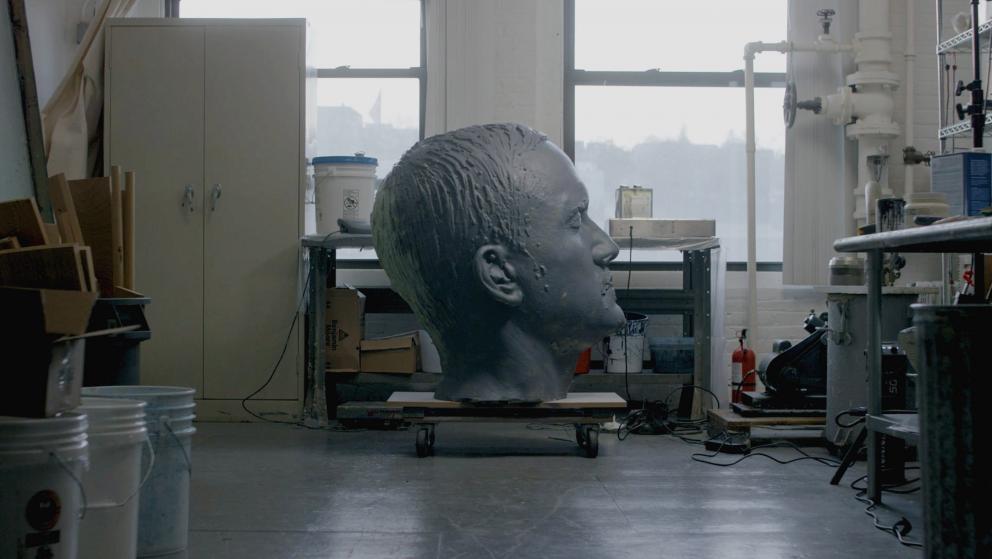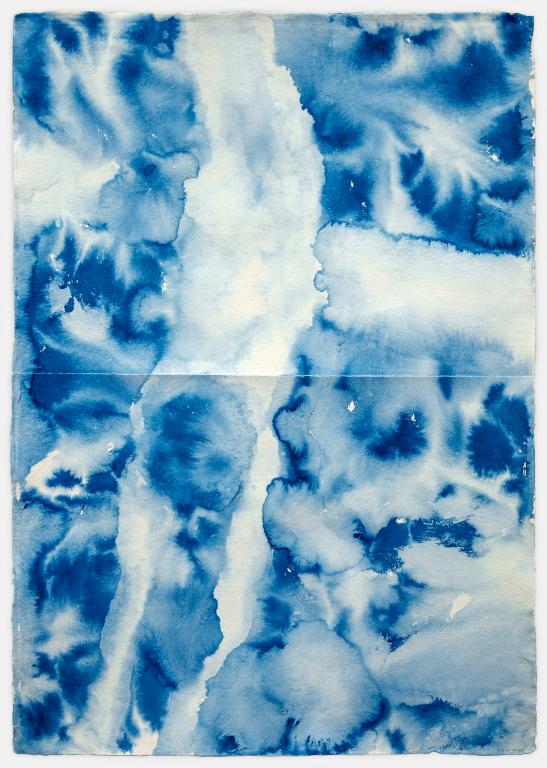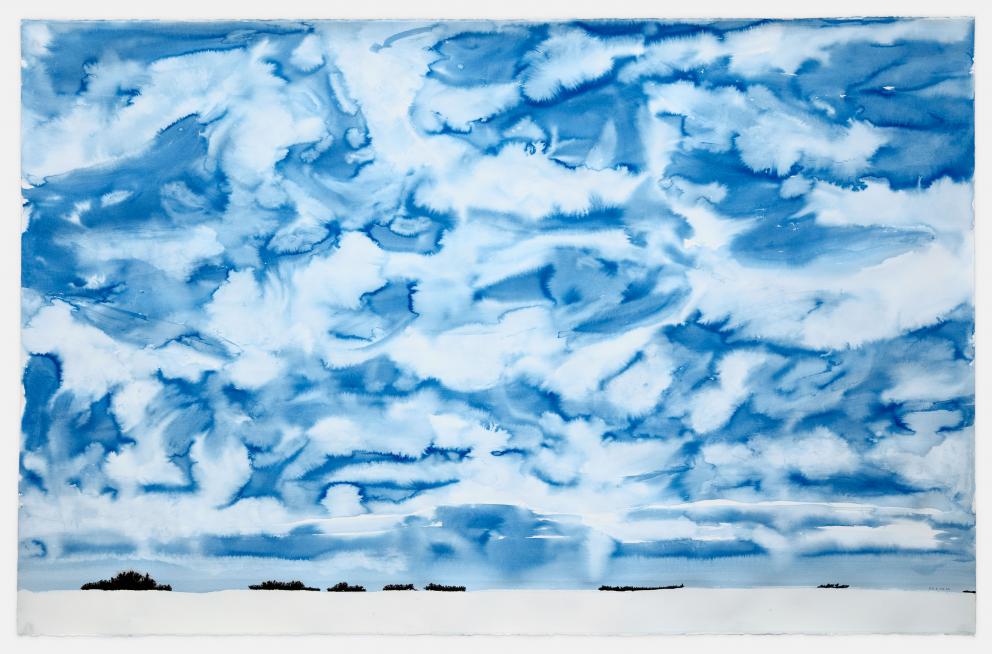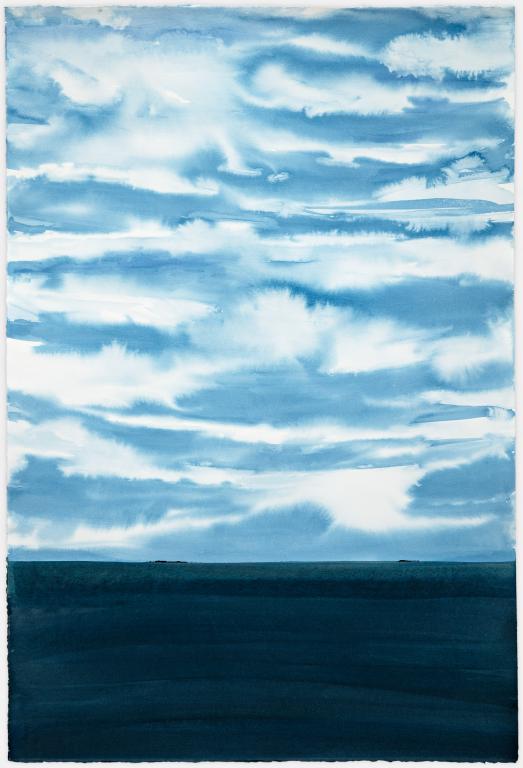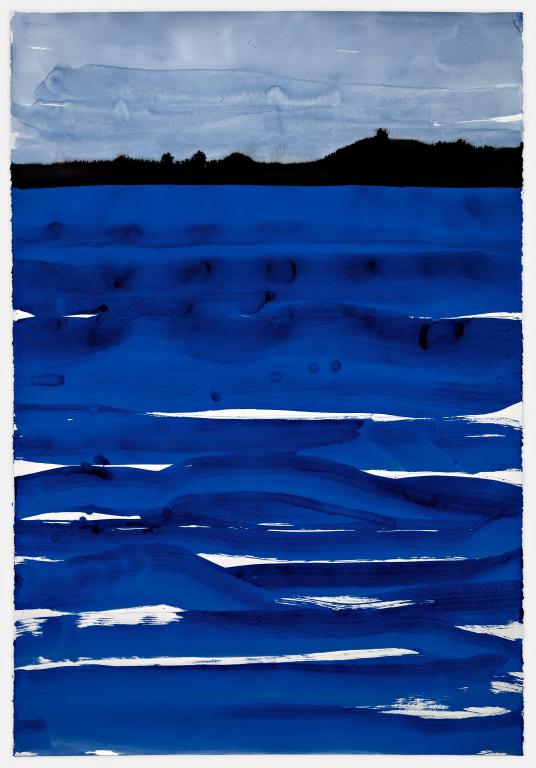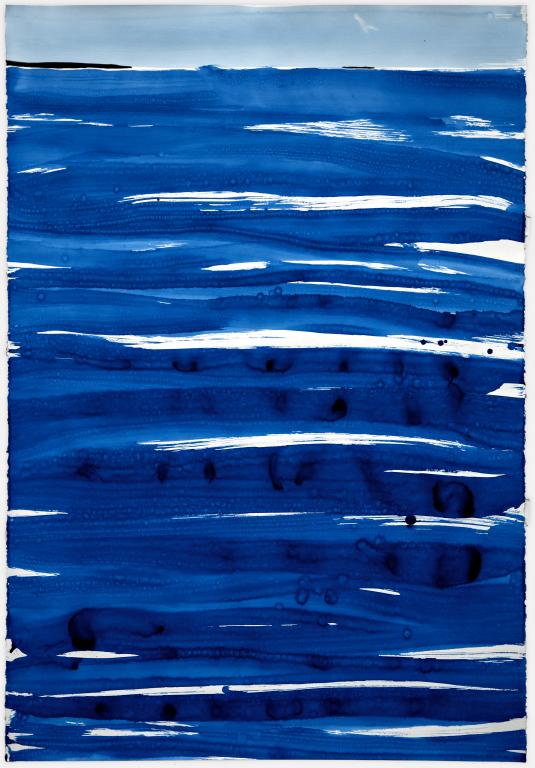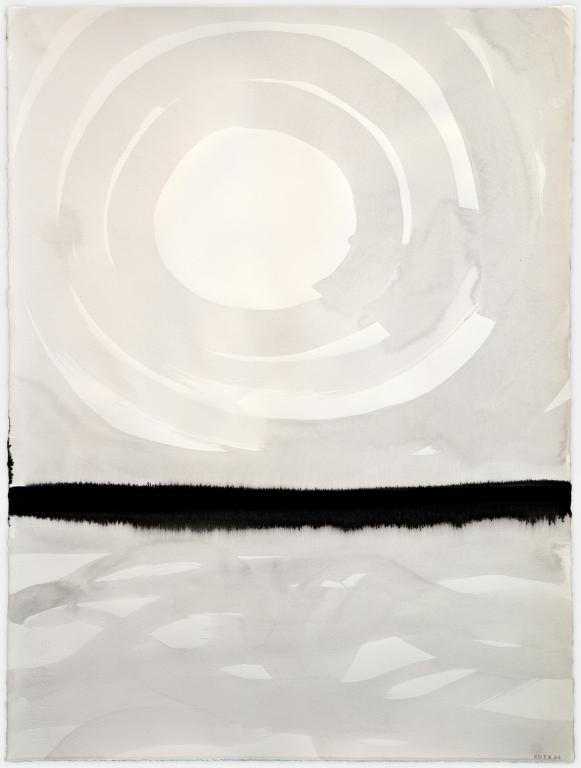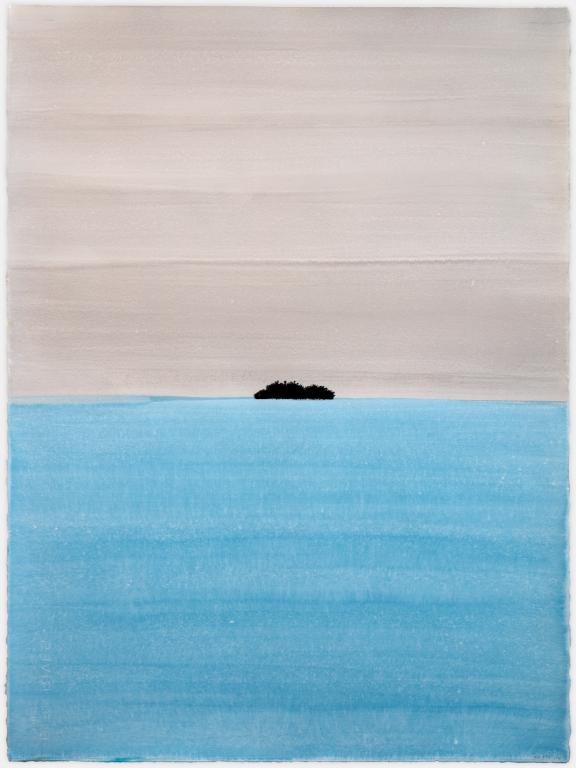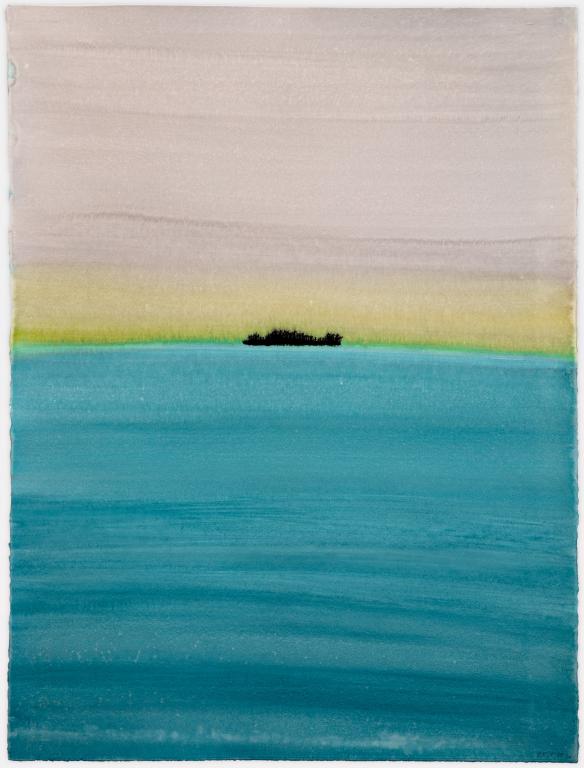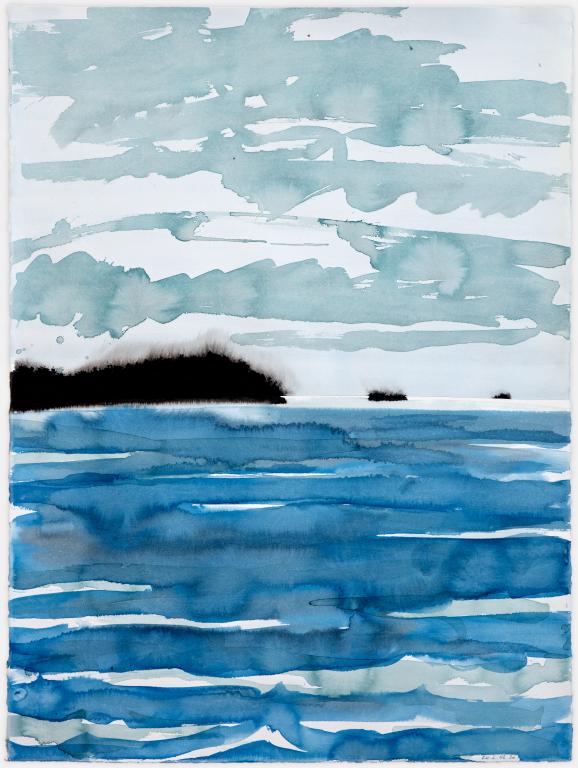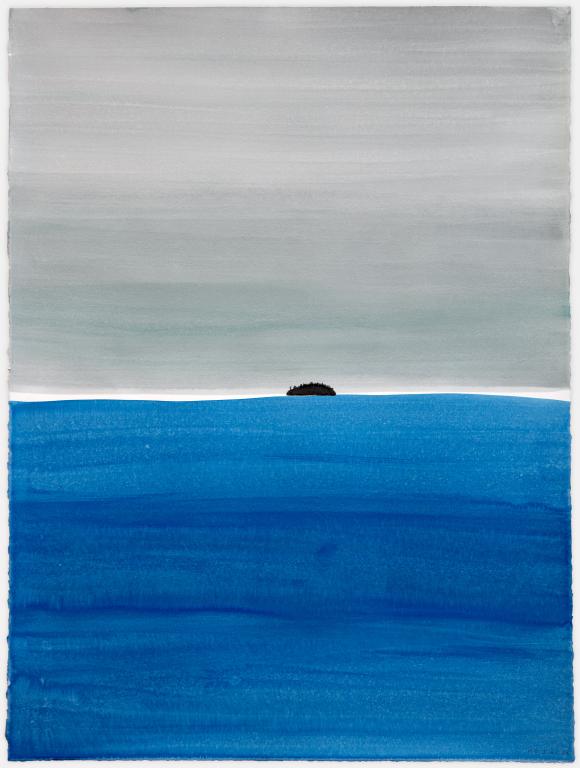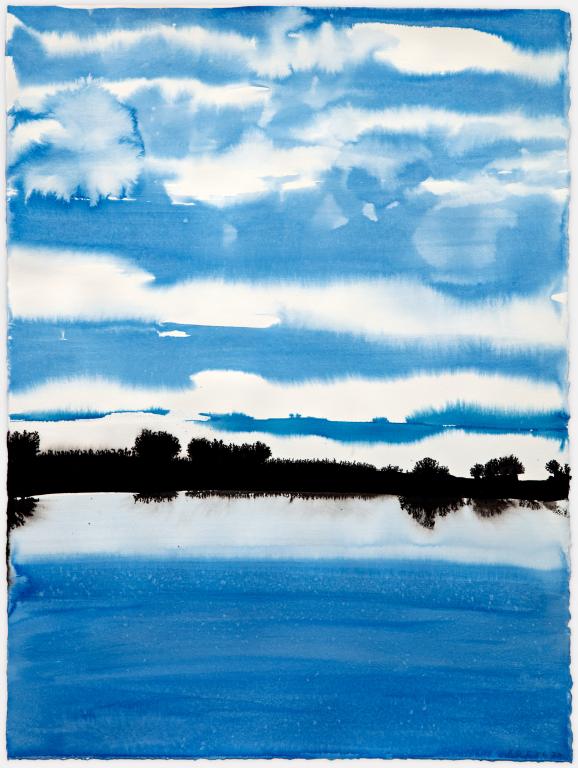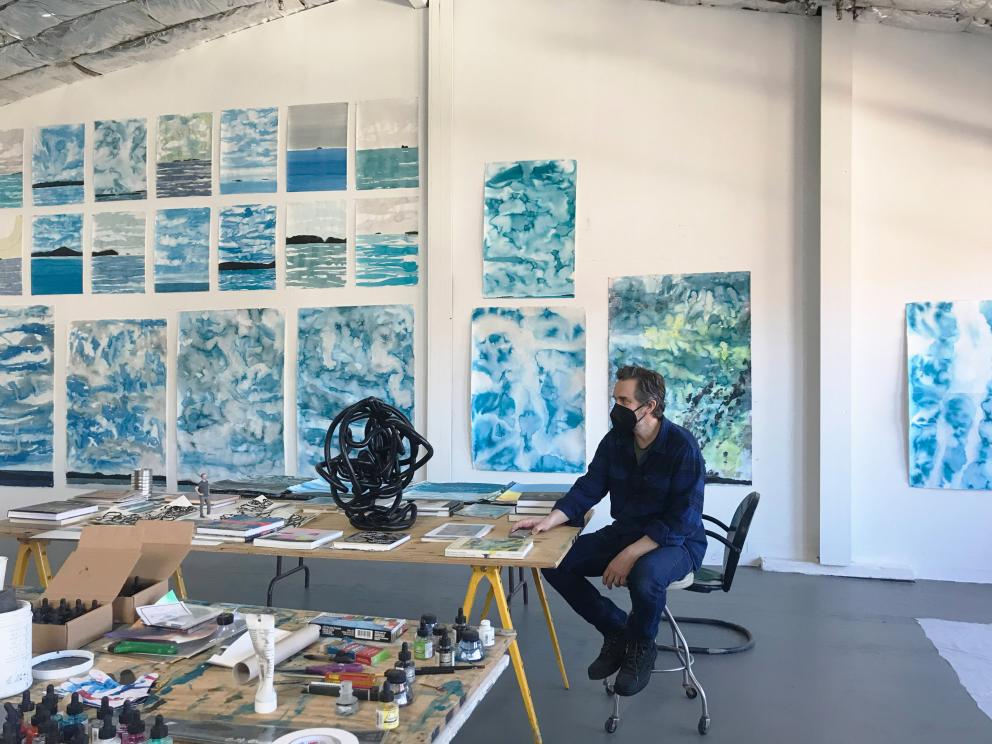Richard Dupont travelled to Maine in the summer of 2020 with his family in search of perspective and time to reflect. By chance, he rented a vacant boat house by the water and promptly set up a space to work with what limited resources he’d brought from his studio in Yonkers, New York.
Unable to transport the large-scale molds and dense materials essential to his practice as a sculptor, Dupont made a surprising shift toward working with watercolor pigment on paper. While drawing and printmaking have always been essential aspects of his work, this new direction allowed for a more improvisational approach.
